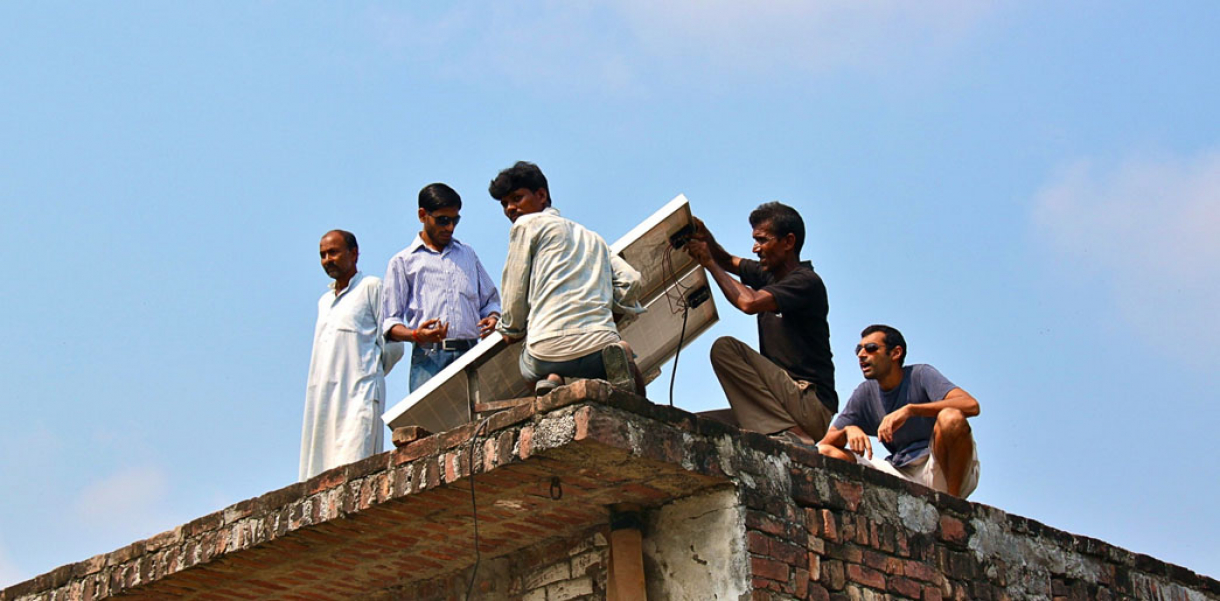In India, power theft and energy losses comprise as much as 58% of the country’s total energy production. On top of that, almost $1 billion worth of diesel subsidies are consumed by telecom towers, leaving most Indians with no clean power alternatives. And this is where Gram Power comes in with smart, energy-efficient micro grids in remote areas providing on-demand, reliable electricity to everyone.
Can you imagine only having 6-8 hours of electricity per day? Sadly, this is the harsh reality for 2.6 billion people in the world. Lack of reliable power is especially a problem in India, where some 400 million people live in rural households off the grid. As a result of not having access to grid-based power, these 400 million people rely on kerosene, which releases tons of carbon dioxide into the atmosphere and claims about 1.5 million Indian lives a year.
Gram Power, an energy technology company founded by two engineering graduates of University of California, Berkeley, has developed a solution to India’s energy crisis. Its co-founder Yashraj Khaitan says, “our Smart Microgrid system comprises renewable-based generation infrastructure installed locally in the village [usually solar panels on a cellphone tower], and a proprietary smart electricity distribution system that tackles the three main challenges of reliable energy access in India: theft and pilferage that forms the root cause for 58 percent of energy losses on the utility grid, high capital costs to extend the utility grid to remote low population areas, and intermittent and unpredictable power supply.”
There are four tenets of Gram Power’s prowess: one, the microgrid is powered by a centralized collection of solar panels, which convert sustainable solar energy to direct current electricity. Two, the clever system stores surplus energy, making it accessible during peak times, safeguarding constant access to the grid. Three, in order to avoid energy theft, and needlessly excessive consumption, homes are fitted with smart meters. Lastly, the bills can be prepaid in small increments of $1, meaning that it’s affordable to all.
The Gram Power system doesn’t just benefit families; it also serves businesses and whole communities. Consumers can use the system to operate water pumps, motors and mills, as well as standard household appliances. Electricity is sold on commission through local rural entrepreneurs, and once the community has reached the total payment for the system, it is transferred to them, enabling them to retain all subsequent profits.
Since the completion of their pilot, Gram Power are on their way to reaching 20,000 homes, with 100 telecom towers fitted for solar panels. With the potential to reach over 300 million people in India alone, and of saving up to $3.5 billion a year, Gram Power is set to revolutionize the energy sector, providing power to those who have struggled too long without it.






